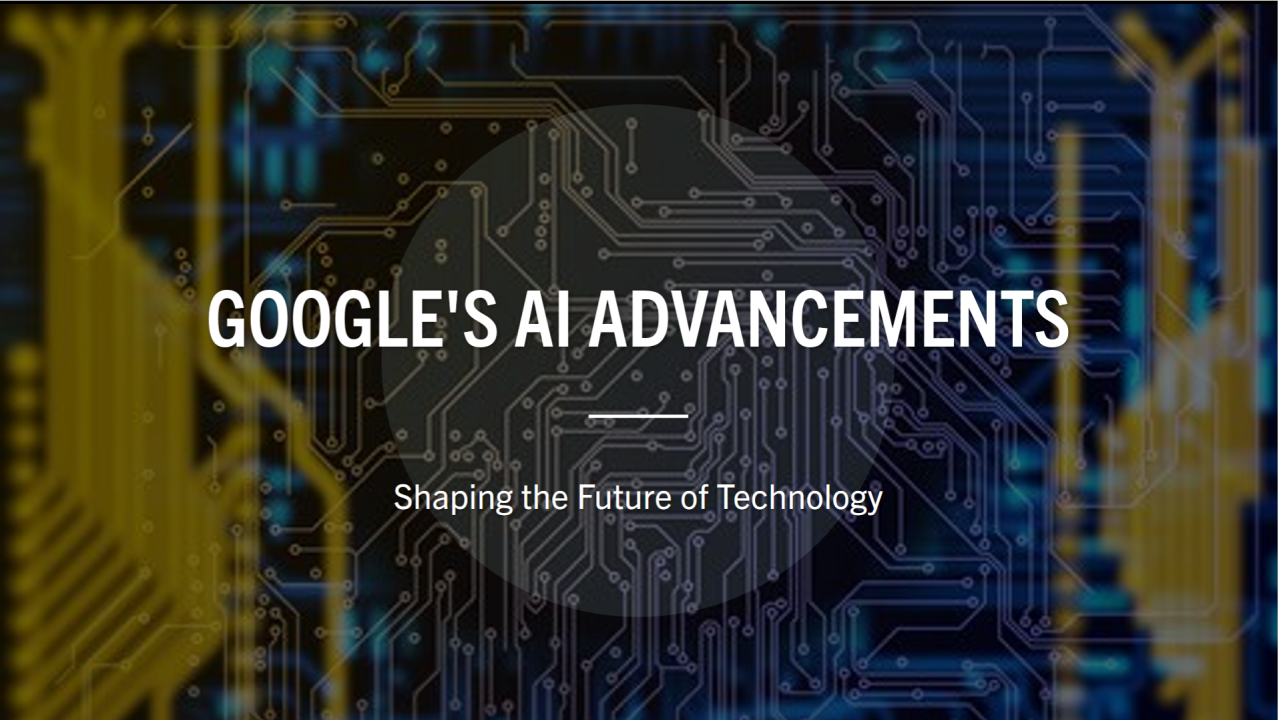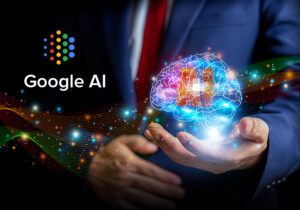Google’s AI Advancements: How Gemini, DeepMind, and Cloud Are Re-shaping the Future
“Google’s AI Advancements are transforming the future of technology through Gemini’s multimodal models, DeepMind’s AlphaFold 3 breakthroughs, AI Overviews in Search, and next-gen Trillium TPUs in Google Cloud. From on-device Gemini Nano in Android to powerful enterprise tools in Vertex AI, Google is re-shaping science, creativity, and everyday digital experiences with cutting-edge artificial intelligence.”
Google has spent the last few years quietly (and not so quietly) turning itself into an “AI-first” company. In 2024–2025 that strategy went into overdrive: a new generation of multimodal Gemini models, a wave of generative media tools, breakthroughs from Google DeepMind in science and agents, on-device AI with Android, and serious silicon to power it all in Google Cloud. This article walks through the big pieces—what they are, why they matter, and where they’re heading next.
Gemini everywhere: one family, many forms
Gemini is Google’s umbrella family of multimodal models—designed from the start to understand text, images, audio, and video. The lineup spans everything from powerful cloud models for enterprises to lightweight, private models that run on phones.
-
Gemini 1.5 Pro & Flash. The flagship Pro model’s headline feature is its huge context window—up to 2 million tokens—letting it ingest hour-long videos, codebases, or piles of PDFs at once and still reason across them. Flash is the leaner, faster sibling optimized for speed and cost. Google Developers BlogGoogle Cloud
-
Gemini Nano (on-device). Nano is the compact member of the family that runs on Android through a new system service called AICore, enabling private, low-latency features like call summaries in Pixel’s Recorder and smarter accessibility in TalkBack—without sending data to the cloud. Google for DevelopersAndroid Developers BlogGoogle DeepMind
Why it matters: Giant context windows change what’s practical—long video understanding, whole-project code refactors, contract analysis—while on-device models unlock private, ambient assistance (summaries, suggestions, safety features) that feel instant and local.
A new Search paradigm: AI Overviews
Google is rebuilding Search with generative answers on top. AI Overviews synthesize a concise, source-linked summary at the top of results for complex queries and step-by-step tasks (like planning a trip or fixing a gadget). After debuting at I/O 2024, AI Overviews began rolling out in the U.S., with Google signaling expansion to more regions and use cases. blog.google+1
Why it matters: Search is moving from “find me links” to “do the legwork for me.” That shift helps users but also raises hard questions—how to attribute sources fairly, avoid hallucinations, and preserve the open web’s economics. Expect Google to iterate on controls, transparency, and ad formats as it scales the feature.
DeepMind’s science engine: AlphaFold 3 and generalist agents
No discussion of Google’s AI would be complete without Google DeepMind. Two strands stand out:
-
AlphaFold 3. The latest version of the famed protein-folding system goes beyond proteins to predict interactions across biomolecules (DNA, RNA, ligands, ions) with big accuracy gains. That’s rocket fuel for drug discovery and molecular design, and Isomorphic Labs (a sister company within Alphabet) is already applying it in partnerships. blog.google
-
Project Astra & SIMA. Google previewed Project Astra, its vision for real-time, multimodal assistants that see, remember, and respond across devices. In parallel, DeepMind published SIMA, a generalist agent trained to follow natural-language instructions across many 3D virtual worlds—useful groundwork for more capable, embodied agents. blog.googleGoogle DeepMind
Why it matters: AlphaFold 3 hints at AI as a scientific instrument, not just a chatbot. And agents like SIMA/Astra point to assistants that can operate in dynamic environments, bridging language understanding with perception and action.
Generative media for creators: Veo, Imagen, and Flow
Google is building a full creative stack around text-to-image and text-to-video:
-
Veo 3 (text-to-video) and Imagen 4 (text-to-image) deliver state-of-the-art quality, faster rendering, and better adherence to prompts. Google has brought Veo and Imagen into consumer-facing tools and into Vertex AI for developers; Veo 3 adds native audio—dialogue, sound effects, and music—synchronized to the generated video. blog.googleGoogle Cloud
-
Veo 3 Fast and image-to-video workflows are now accessible via the Gemini API, helping developers iterate quickly while keeping costs down. Google Developers Blog
Why it matters: High-quality video and image generation with built-in watermarking and safety checks is table stakes for creative industries. Google’s play is to ship pro-grade tools with responsible defaults, and to make them programmable in Vertex AI so teams can integrate them into production pipelines.
AI in Android: private, ambient, helpful
On phones, Google’s strategy blends cloud Gemini with on-device Gemini Nano:
-
AICore is Android’s system layer that manages on-device models, updates, and safety features so developers can tap Nano for things like local summarization, smart replies, or image captions—without network round-trips. Pixel features like Call Notes and Recorder summaries showcase the pattern. Google for DevelopersGoogle DeepMind
-
Multimodality at the edge (camera + mic + screen) powers experiences like Circle to Search, live screen-sharing explanations, and background tasks where latency and privacy are crucial.
Why it matters: The best AI experiences will be hybrid—private by default, cloud-enhanced when needed. Android’s plumbing makes that model accessible to any app, not just Google’s.
Enterprise and developers: Vertex AI, Agents, and safety by design
For organizations, Google Cloud’s Vertex AI provides managed access to Gemini, Veo/Imagen, and domain tools (search, RAG, safety, monitoring). Key priorities:
-
Long-context understanding for large documents, code, and media using Gemini 1.5 Pro within Vertex workflows. Google Cloud
-
Generative media in production with governance: content filters, audit logs, and watermarking support.
-
Safety stack: Google’s SynthID watermarking for AI media, policy filters, and evaluation tooling to reduce unsafe outputs and improve provenance.
Why it matters: Entering production means thinking about compliance, monitoring, cost, and reliability. Vertex AI’s integrations (BigQuery, Looker, Workspace) and governance features are Google’s pitch to regulated industries.
Custom silicon: Trillium (TPU v6)
Under the hood, AI needs serious compute. At I/O 2024, Google announced Trillium, its sixth-generation Tensor Processing Unit (TPU), claiming the most performant TPU yet and a 4.7× per-chip compute boost versus the popular v5e. Trillium powers Google’s internal workloads and is exposed to customers through Google Cloud. blog.google
Why it matters: Model quality tracks compute. Owning the full stack—from data center design to accelerators to compilers—lets Google push performance and efficiency while keeping training/inference costs predictable for its ecosystem.
What this means for creators, businesses, and researchers
-
Creators & marketers: Veo/Imagen compress production cycles. Storyboards to rough cuts to polished drafts can happen in hours, not weeks. The tradeoff is learning prompt craft, post-editing, and watermark-aware workflows.
-
Developers: Giant context + tools (code execution, structured output, function calling) simplify app logic. Use Gemini 1.5 Pro for reasoning and long inputs, Flash for latency-sensitive tasks, Nano for private on-device features. Google Developers Blog
-
Enterprises: Start with high-value, narrow use cases—document Q&A, customer support agents, analytics summaries—then scale. Vertex AI helps with governance, while Trillium and Google Cloud regions handle performance and data residency. blog.google
-
Scientists: AlphaFold 3 opens new doors in structure-based design; expect tighter loops between hypothesis, simulation, and lab validation. blog.google
Challenges and open questions
Google’s aggressive push brings real challenges:
-
Search and the open web. AI Overviews can reduce clicks to publishers, and mistakes in summaries can erode trust. Google is iterating on quality and controls, but the long-term balance between user convenience and a healthy web ecosystem is still unresolved. blog.google
-
Safety & provenance. As generative media scales, watermarking, attribution, and abuse prevention need to be default-on and interoperable across platforms.
-
Cost and performance tradeoffs. Long context is powerful—but expensive. Choosing the right model (Pro vs. Flash vs. Nano) and caching, retrieval, or distillation strategies will define ROI. Google Cloud
-
Agents in the wild. Astra-style agents that perceive and act raise UX, reliability, and privacy questions. The road from compelling demos to dependable everyday assistants will pass through strict guardrails and staged rollouts. blog.google
How to get hands-on today
-
Try generative media: Experiment with Veo/Imagen via the Gemini API or Vertex AI if you need governance and scale. Veo 3 Fast is handy for rapid iteration and image-to-video pipelines. Google Developers Blog
-
Prototype long-context workflows: Feed Gemini 1.5 Pro whole docs, transcripts, or repositories; test “needle-in-haystack” queries and chain-of-thought-free reasoning with structured outputs. Google Cloud
-
Ship private features on Android: Use AICore + Gemini Nano for on-device summaries, captions, and content suggestions that work offline and preserve user privacy. Google for Developers
-
Explore scientific use cases: If you’re in biotech or materials, review AlphaFold 3’s capabilities and limits, and map it to your in-house modeling and lab workflows. blog.google
The bottom line
Google’s AI strategy is cohering into a full-stack approach:
-
Models that span cloud-scale reasoning and private on-device intelligence (Gemini Pro/Flash ↔︎ Nano).
-
Assistants and agents that are multimodal and proactive (Astra, SIMA), not just chatbots. blog.googleGoogle DeepMind
-
Creative tools that turn prompts into production-ready media (Veo, Imagen) with enterprise-grade controls. blog.google
-
Infrastructure that keeps the whole thing fast and economical (Trillium TPUs on Google Cloud). blog.google
-
Search that increasingly does the task for you while trying to preserve attribution and trust (AI Overviews). blog.google
Plenty of work remains—safety, reliability, and economics are moving targets. But taken together, Google’s AI advancements point toward a world where assistance becomes ambient and multimodal, creativity is accelerated by default, science gets a new set of instruments, and the web’s most popular front door starts answering more questions directly. The winners will be the teams that learn to compose these pieces—choosing the right model for each job, building responsible guardrails, and designing user experiences that feel not just “AI-powered” but genuinely helpful.
AI-Powered Graphic Design Tools: Revolutionizing Creativity in the Digital Era





